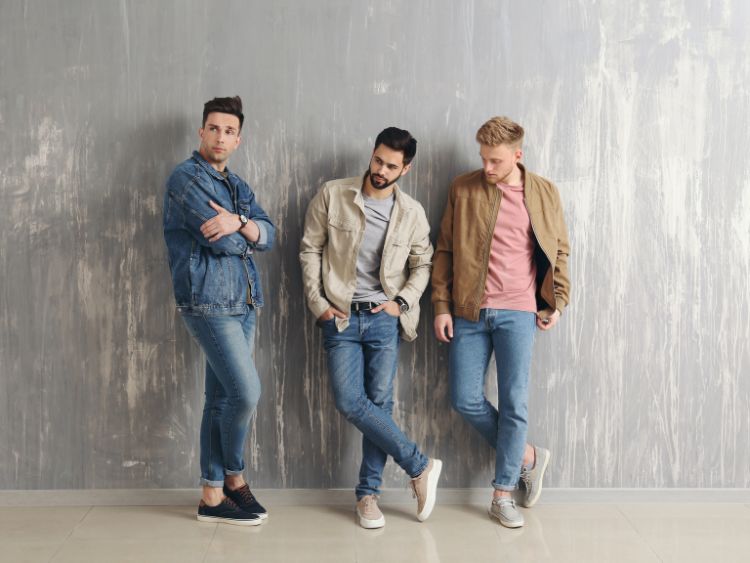Navigating the ever-evolving world of workplace attire can be daunting, especially when the term “business casual” gets thrown around. What does it really mean? Are jeans acceptable? Should you ditch the tie? Business casual has become the go-to dress code for many offices, but its ambiguity leaves room for interpretation—and confusion. In this article, we’ll break down the essentials of business casual attire, offering guidance on how to strike the perfect balance between professionalism and comfort. Whether you’re a seasoned professional or a newcomer, this guide will help you master the art of business casual.
Understanding Business Casual: What Is It Really?
Business casual is the middle ground between formal business wear and everyday casual attire. It’s a dress code that offers flexibility but still requires a level of professionalism. In essence, business casual allows you to maintain a polished appearance without the stiffness of a suit and tie. But here’s the kicker—what’s considered business casual can vary depending on your workplace, industry, and even geographical location. So, how do you decode it?
Key Elements of Business Casual for Men and Women
Let’s dive into the specifics. Business casual for men typically includes:
- Shirts: Collared shirts like dress shirts, polo shirts, or even well-fitted sweaters.
- Pants: Dress pants, chinos, or khakis. Avoid jeans unless explicitly allowed.
- Shoes: Leather shoes, loafers, or dressy boots. Sneakers are usually a no-go.
For women, business casual might involve:
- Tops: Blouses, sweaters, or tailored shirts.
- Bottoms: Slacks, skirts (knee-length or longer), or dressy pants.
- Footwear: Flats, loafers, or low heels. Open-toed shoes are often acceptable, but flip-flops are not.
The Do’s and Don’ts of Business Casual
When it comes to mastering business casual, there are a few golden rules to follow. These will ensure you’re always dressed appropriately for the occasion.
Do’s:
- Keep It Neat and Tidy: Regardless of how casual your outfit is, it should always be clean, wrinkle-free, and well-fitted.
- Incorporate Layers: A blazer or cardigan can instantly elevate your look, making it more polished.
- Choose Neutral Colors: Sticking to a palette of neutrals—think navy, black, grey, and beige—helps maintain a professional appearance.
Don’ts:
- Avoid Overly Casual Items: Skip the ripped jeans, graphic tees, and overly casual footwear like flip-flops or running shoes.
- Don’t Over-Accessorize: Keep jewelry and accessories minimal and understated.
- Steer Clear of Bold Patterns: Loud prints and bright colors can be distracting and may not align with the professional tone of business casual.
Dressing for Different Seasons
The weather can significantly impact your business casual wardrobe. But with the right pieces, you can maintain your style year-round.
Spring and Summer
- Light Fabrics: Opt for breathable materials like cotton or linen to stay cool.
- Colors: Softer hues like pastels or light greys work well for warmer months.
- Footwear: Consider loafers or stylish flats, which offer comfort and breathability.
Fall and Winter
- Layers: Incorporate heavier fabrics like wool or tweed. Sweaters, blazers, and coats become essential.
- Darker Tones: Rich colors like burgundy, navy, and deep green are perfect for the colder months.
- Boots: Ankle boots or dressy boots are stylish yet practical for winter.
Business Casual in Different Industries
Business casual can mean different things in various industries. Let’s explore how this dress code translates across sectors.
Corporate World
In corporate environments, business casual is often closer to formal business attire. Men might wear dress shirts with slacks and a blazer, while women could opt for pencil skirts or tailored dresses.
Tech Industry
In the tech world, business casual can lean more toward the casual side. Jeans paired with a nice shirt or sweater are typically acceptable. However, it’s still essential to look put-together.
Creative Fields
Creative industries like marketing or design often allow for more freedom in dress. Bold colors and unique accessories might be more welcomed, but it’s still crucial to maintain a polished look.
FAQs About Business Casual
Q: Can I wear jeans in a business casual setting?
A: It depends on your workplace. Some offices allow dark, well-fitted jeans as part of a business casual look, but it’s best to avoid distressed or overly casual styles.
Q: Are sneakers ever appropriate for business casual?
A: Generally, no. However, some workplaces in more creative or tech-focused industries may allow clean, minimalist sneakers. Always check your company’s dress code.
Q: How can I make my business casual outfit stand out?
A: Focus on fit and details. A well-tailored blazer or a pair of sleek, polished shoes can elevate even the simplest outfit.
Conclusion
Mastering business casual is all about balance. It’s the sweet spot where professionalism meets comfort, allowing you to present yourself confidently without feeling overdressed. By understanding the key elements, following the do’s and don’ts, and considering the nuances of your industry and environment, you’ll always be prepared to make a great impression. Remember, when in doubt, it’s better to err on the side of being slightly overdressed than too casual. So go ahead, refine your wardrobe, and step into the world of business casual with confidence!



